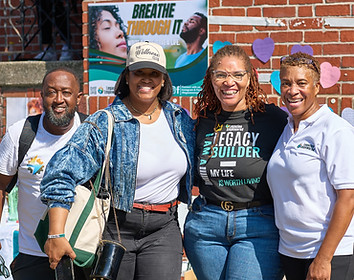
Breathe Through It:
Suicide Prevention
We go through times where the simple act of breathing can feel unbearably heavy. If that’s you right now, please keep going: one breath, then another. And know that you don’t have to carry it alone.
Get Support
Recent data reveals an alarming increase in suicide rates among Black and African American youth. In 2023, the Centers for Disease Control and Prevention (CDC) reported that suicide rates among Black adolescents have continued to rise,
with a 30% increase in suicide rates for Black children ages 10 to 14 from 2018 to 2023.
This troubling trend was further highlighted by a 2024 study published in the Journal of the American Medical Association, which found that Black adolescents are twice as likely to die by suicide compared to their white counterparts. Additionally, the National Institute of Mental Health reports that, in 2024,
suicide remains
a leading cause of death
for Black youth ages 10 to 19
with these individuals facing a higher risk compared to their peers. This disparity is compounded by persistent barriers to accessing mental health resources and support within these communities. These recent statistics emphasize the urgent need for effective mental health interventions and increased support for at-risk youth.
Here's What You Can Do
Get Trained in QPR
3 Steps to Save a Life
Question, Persuade and Refer (QPR) Suicide Prevention Training teaches young people and adults about the signs of a suicidal crisis and how to assist someone who may be thinking about taking their own life. QPR teaches three steps to help save a life (Ask a question, Keep them Safe and Refer to help) and allows you to practice these skills in a safe learning environment.

Write a Note, Save a Life
We invite you to share messages of hope and support. Your words can make a difference. Please fill out the form below to send a message to someone who needs it the most.

